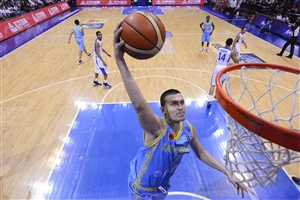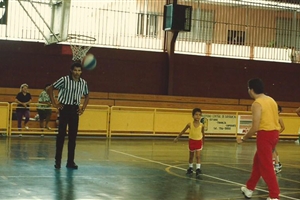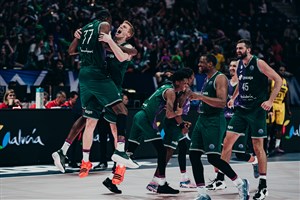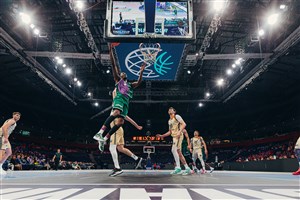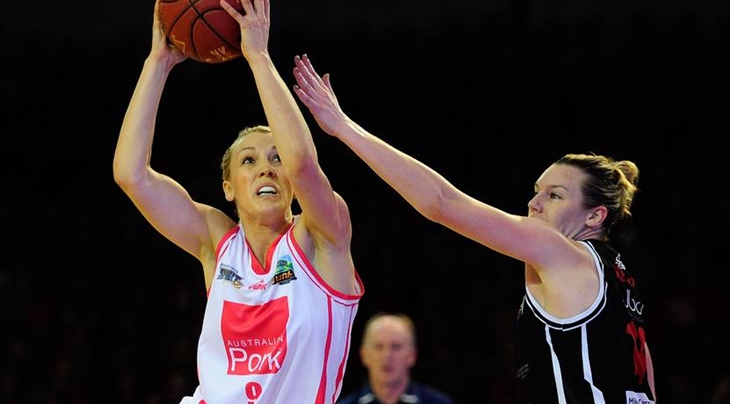
Garrick appears from Joyce's left-field factory
MELBOURNE (Paulo Kennedy's View from Downunder) - Brendan Joyce has spent the past week putting an extended Opals squad through their paces ahead of their European tour.
I asked him whether some players show a different side to what we see week-to-week in the WNBL.
"Yes is the short answer to that question," he said.
"There's always someone who jumps out at you, and one example is Maddie Garrick."
It was a surprising answer, given the 23-year-old Garrick averaged just 4.5 points in 12 minutes per game this past WNBL season.
"She didn't play a lot for Bendigo, but in the pieces I watched Maddie play I thought she could shoot and she's really athletic and quick," Joyce said.
"In her role with Bendigo, all you saw her do was catch and shoot, but she's actually quite explosive off the dribble and she's better than I thought she would be, and it's not just me, all the coaches think that."
Sure enough, Garrick was selected in the touring team, continuing Joyce's record of left-field selections.
SQUAD ANNOUNCEMENT | The @JaycoAust Opals line up for Europe is official. Read more here: http://t.co/ueUX5dlpBj pic.twitter.com/njibVtL1QE
— Basketball Australia (@BasketballAus) May 6, 2015
Some of those picks have been maligned by many commentators, including myself, but so far they've proved a masterstroke as the Opals have rarely tasted defeat - nor won by less than double figures - in the past two years.
But when it comes to playing at the highest level, against the best teams in the world, how can Joyce justify the selection of role players over the most talented available?
"When people look at the most talent, unfortunately people look at the leading scorers," he said.
"But some of those players can't defend, or they don't rebound, or they don't run hard enough the whole game.
"So forget about talent, the question most coaches need to ask themselves is how do you win?"
Joyce is adamant "you can't win with a team of leading scorers", especially if not all of them are like Penny Taylor "who can do it all".
So how do you pick a diamond from the rough?
"It's a player who brings a point of difference," he said.
"They're not the best players but they bring a point of difference that’s going to help you win games."
One point of difference that Garrick provides, almost ironically, is that she hasn't been a star at club level.
"It is a benefit because she's happy to be a part of it, rather than her ego getting involved and thinking she should have a bigger role," Joyce said.
But the more Joyce talks about what he thinks the Opals can win, the more it becomes obvious he wants players who can lock down defensively, both in individual and team situations.
"Lizzy Cambage can score, Erin Phillips can score, we need some players who can defend," he said, pointing to the offensive stars Australia will face in Rio.
"I might end up taking a player who mightn't be one of our best offensive players because I need people who can defend someone like that."
At last year's FIBA Women's World Championship, the Aussies held all opponents bar the USA below 60 points, suggesting there is method to the Joyce madness.
Missing many of the major stars from the 2012 Olympics - including Lauren Jackson, Cambage, Kristi Harrower, Suzy Batkovic and Jenna O'Hea - the Opals looked weak in the frontcourt.
But it turned out they dominated in that area, with Marianna Tolo, Natalie Burton and Laura Hodges in particular creating a wall of help and recover defence.
"We were great defensively because of Tolo, Burton, Laura Hodges. We were quick across the board," Joyce said.
But with many of those bigger-name but slower stars now eyeing a spot for the Rio Olympics, Joyce and his coaching panel face the tough task of choosing between offensive talent and players who fit the successful system.
The other challenge is finding roles for particular players who may not be able to play at the required defensive intensity for sustained periods, with the hobbled Jackson a prime candidate.
"Lauren's like Penny, she's pretty special. She can do things not a lot of players can do, like shoot the three and post up, and she's 6ft 5in (1.95m) with a high intellect," Joyce said.
That unique skillset could see the nearly 34-year-old Jackson a key player off the bench in Rio at big moments, but Joyce has one proviso.
"I think she has to be healthy, if her knees were 70 per cent there'd be no point. I think her knees are going to have to be at 90 per cent," he said.
"If they're at 70-80 per cent we're hoping she can get it done for us rather than knowing she can get it done for us."
That will be just one of many tough decisions that could lead to medals or derision for Joyce and Co.
Tolo, Burton, Hodges and Rachel Jarry have staked their defensive claim in Joyce's system. Cayla Francis was a strong contributor in Turkey and offers three-point range from the frontcourt.
Batkovic steps into Joyce's team for the first time on the upcoming European tour, while O'Hea and Abby Bishop have yet to stake a claim.
And that's just the frontcourt!
What's clear is Joyce isn't interested in reputations, he wants players who can complement the likes of Taylor, Cambage and Phillips.
That's great news for players like Garrick, Kelly Wilson, Katie Ebzery and Steph Talbot who are offer to Europe and will then be charged with defeating New Zealand to ensure direct passage to Rio.
Who will provide that point of difference?
Paulo Kennedy
FIBA
FIBA's columnists write on a wide range of topics relating to basketball that are of interest to them. The opinions they express are their own and in no way reflect those of FIBA.
FIBA takes no responsibility and gives no guarantees, warranties or representations, implied or otherwise, for the content or accuracy of the content and opinion expressed in the above article.


